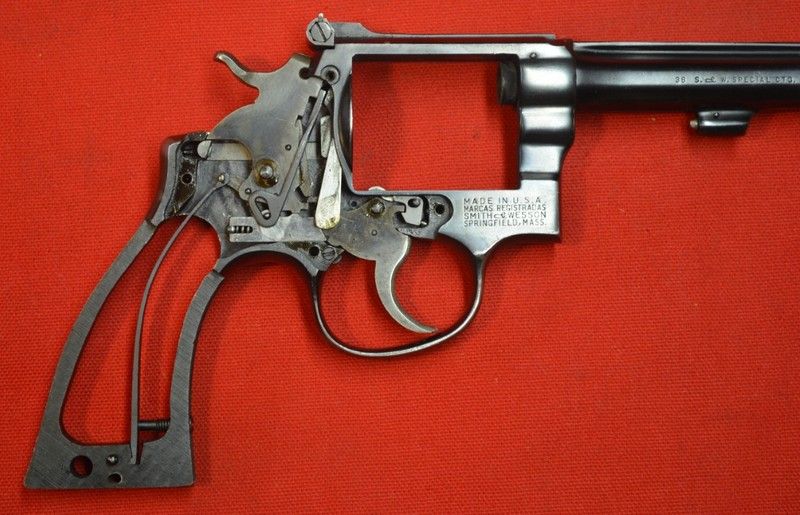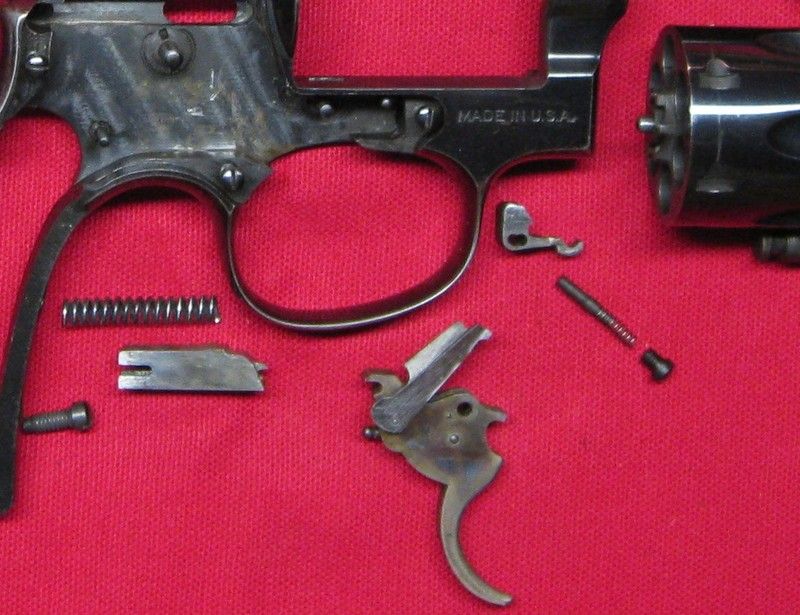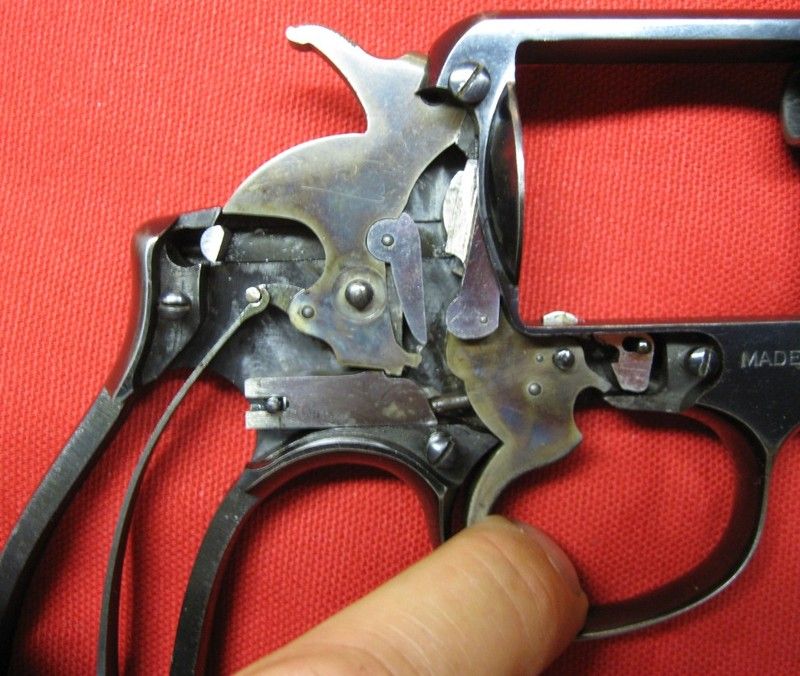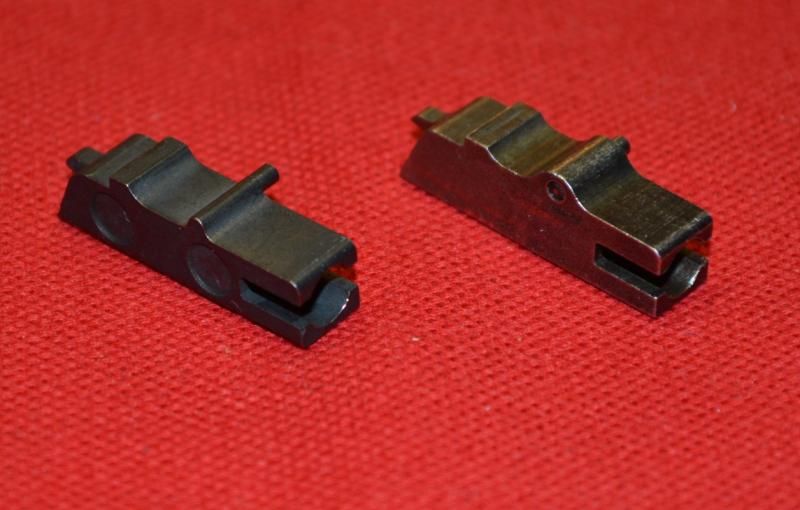
 |
|
|
#1 |
|
Senior Member
Join Date: March 22, 2011
Location: Southern Louisiana
Posts: 198
|
new Model 48 --
having just fired my new model S&W 48, and knowing the action will smooth out some in time, the trigger is a little heavier than I like. --- I remember in the past replacing the hammer spring with a somewhat lighter Wolf spring--
Watching that I don't go too far and start getting light hits, will this help with slightly lightening the trigger pull without having to take the whole action apart ? John |
|
|
|
|
#2 |
|
Senior Member
Join Date: January 3, 2014
Location: Land of the Pilgrims
Posts: 2,033
|
Howdy
Yes and no. I am assuming you are talking about the double action trigger pull. There are two springs that affect the double action trigger pull in any modern S&W revolver. Of course, the hammer spring will affect it. But the rebound slide spring probably has more to do with how heavy the double action trigger pull is than the hammer spring. At least, that has been my experience. Here is a photo of a K-38 with the side plate removed. I don't own a Model 48, but the action will be basically the same as what you see here. The hammer spring is obvious. The rebound slide is the part directly behind the trigger. There is a coil spring inside it, you can see the spring peeking out of the slot at the rear of the rebound slide. Every time you pull the trigger or cock the hammer, you are compressing the rebound slide spring. When you release the trigger in Double Action fire, the rebound slide spring shoves the trigger forward again. You can buy a lighter rebound slide spring from Wolff, but you have to remove the hammer block, hammer spring, hammer, and rebound slide before you can replace the rebound slide spring. The rebound slide is the trickiest. It is not difficult, but the spring is under a great deal of pressure. You need to compress the rebound slide spring while coaxing the rebound slide up. Brownells makes a special tool for this, but you can do it with a screw driver in a pinch. You have to be careful, because once the rebound slide spring clears the pin holding it in place, it will take off for the most remote corner of your basement, never to be seen again. If you are replacing the spring anyway, you may not care, but I don't like springs flying around the room. That's why you have to compress the spring while coaxing the Rebound Slide up. Once the Rebound Slide clears its retaining stud, you carefully relieve the compression of the spring, and you can pluck it out. Then you pop a new one in, compressing it again as you coax the Rebound Slide back into position. Replacing the rebound slide spring with a lighter one will give you a lighter trigger pull without affecting how hard the firing pin hits a primer. You can of course change out the hammer spring too.  Here is a view of another old Smith with the Rebound Slide Spring removed from the Rebound Slide.  In this photo, I am holding the trigger back after the hammer has fallen. You can see the Rebound Slide Spring is completely compressed, trying to push the Rebound Slide forward again. There is a stud that pivots on a pin in the trigger, and when I let the trigger go, the Rebound Slide will shove that stud forward, pushing the trigger forward as it goes.  Putting in a lighter rebound slide spring will result in the trigger return not being quite as crisp, but that usually does not matter too much. Just replacing the hammer spring will of course give you a lighter trigger pull, but not as much as replacing the rebound slide spring too. I do not recommend the old trick of backing out the hammer spring strain screw to lighten the force of the hammer spring. Last edited by Driftwood Johnson; September 4, 2016 at 10:09 AM. |
|
|
|
|
#3 |
|
Junior Member
Join Date: August 19, 2016
Location: Kentucky
Posts: 12
|
True, it will help slightly. But your best bet for lightening and smoothing the pull is a good cleaning and light polish on the contact surfaces.
__________________
Lee from KY |
|
|
|
|
#4 |
|
Senior Member
Join Date: March 22, 2011
Location: Southern Louisiana
Posts: 198
|
Driftwood, thank you, very good way to show what needs to be done---and Chief, you are right also, having it apart and opened is certainly the time for some clean up --- I have replaced the springs on S&W's before, but it was many years ago and my eye sight and co-ordination were much better then --- I'll go ahead and give it a few more range sessions and then replace both those springs with a slightly lighter Wolf kit. Your photos will be a big help, thanks, very much appreciated ----
John |
|
|
|
|
#5 |
|
Senior Member
Join Date: March 22, 2011
Location: Southern Louisiana
Posts: 198
|
When the hammer spring is replaced, is the tensioning screw just retightened the same amount of turns it took to back it out far enough to release the spring pressure ? John
|
|
|
|
|
#6 |
|
Senior Member
Join Date: January 3, 2014
Location: Land of the Pilgrims
Posts: 2,033
|
Howdy Again
When your revolver left the factory the strain screw for the hammer spring was tightened all the way down. That is the way the gun is designed, that is the way Smiths have been made for well over 100 years. You can play games backing the strain screw out a certain amount, for a slightly lighter hammer fall, which will of course result in a slightly lighter trigger pull, but that is not the way the gun was designed. Backing the screw out you may find that you start getting light primer hits and the gun becomes unreliable. Your Model 48 is a rimfire revolver, and rimfire cartridges actually may need a slightly heavier firing pin strike than some brands of centerfire primers, because it takes more of a strike to flatten the rim than it does to fire a cenerfire primer. In fact, if you back the screw out too much, the spring will begin to bind on the frame. You can see this if you remove the grips and play around with the strain screw. At some point, you will see the spring begin to bind on the frame when you cock the hammer. To remove the hammer spring, loosen the strain screw enough so that the spring is loose and can be easily removed. I usually remove the side plate first, because that makes getting the new spring in place easier. Put a tiny drop of light oil on the two hooks on the new spring that fit around the stirrup on the hammer. Make sure the new spring is centered in its slot in the frame, then tighten the strain screw down all the way. You are putting in a lighter spring, so there should be no need to leave the strain screw not tightened all the way. If you go as far as removing the Rebound Slide to replace its screw, you can lightly stone the back surface and the bottom surface of the slide, where they bear against the frame, to remove a teeny bit of friction, but it probably is not necessary. If it is a new gun, the Slide is probably a MIM part and the surface may appear a little bit pebbly. The rebound slide on the left in this photo is a MIM part from a Model 617, the traditionally forged and machined Rebound Slide on the right is from a Model 17-3 made in 1973. If you choose to stone the part, you do not have to bring it to a mirror finish. Just lightly stone it to remove any high spots.  Here is the Rebound Slide removal tool that Brownells sells. I like it. http://www.brownells.com/gunsmith-to...l-prod774.aspx If you are going to get serious about messing around inside S&W revolvers, I suggest you invest in this book. It is the best book, bar none, on the market about working on S&W revolvers. You can also buy it at Amazon, Midway, Brownells, and lots of other places. http://www.gunbooks.com/sw.html |
|
|
|
|
#7 |
|
Senior Member
Join Date: January 4, 2012
Location: Northern Missouri
Posts: 480
|
Mr. Driftwood Johnson: Thanks for the fine, illustrated post on the working of the S&W double action. In my S&W collection I find the single action pull is always crispy but the DA pull varies quite a bit among different models. This is not much of a concern for me because I am always shooting single action. That's what I would be doing with a Model 48 which is a .22 Rimfire Mag, right? Like to have one and try to pop some varmints out to 100 yards or so.
|
|
|
 |
|
|